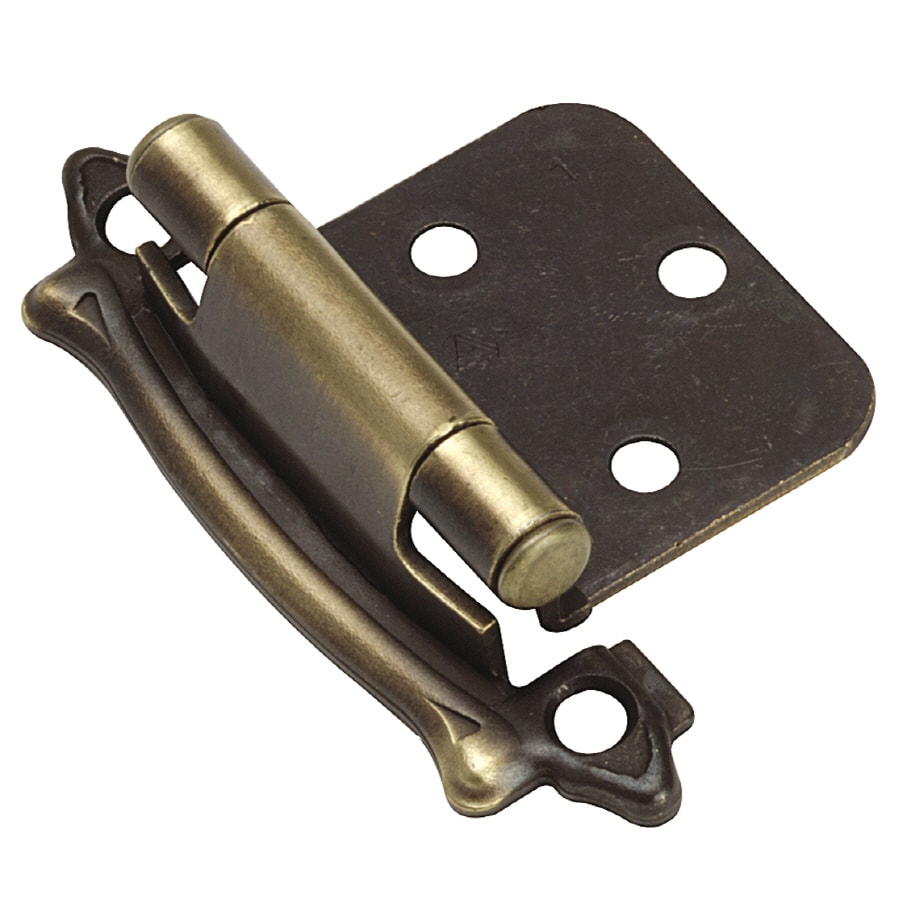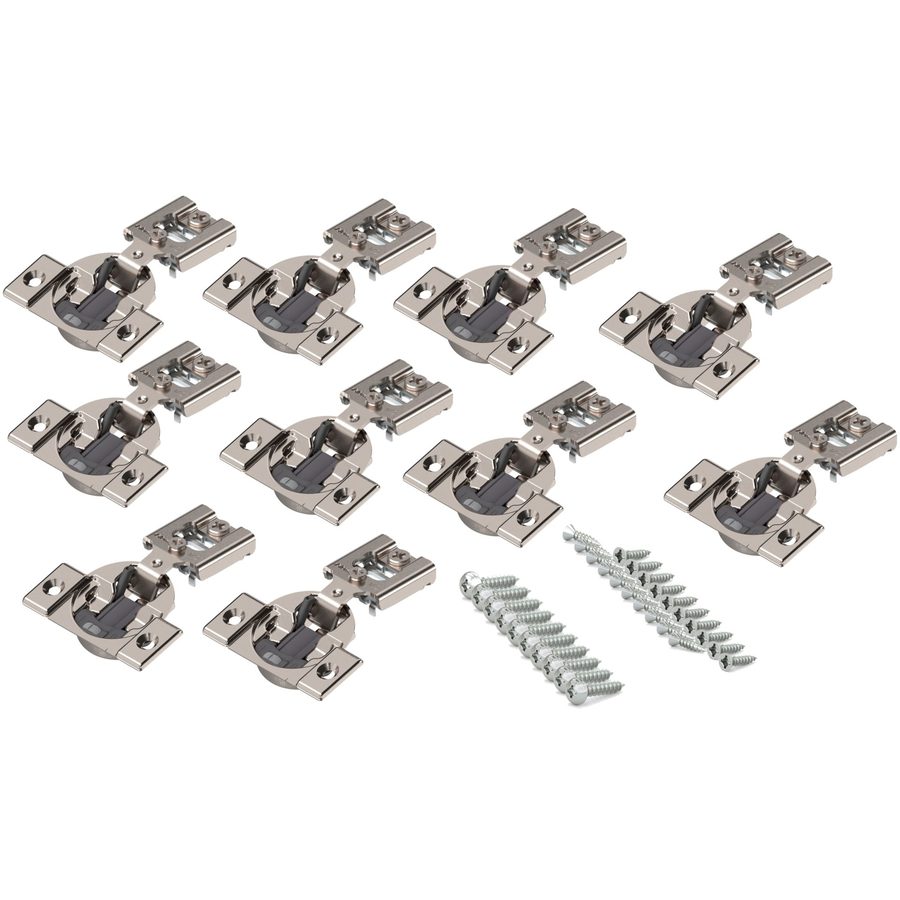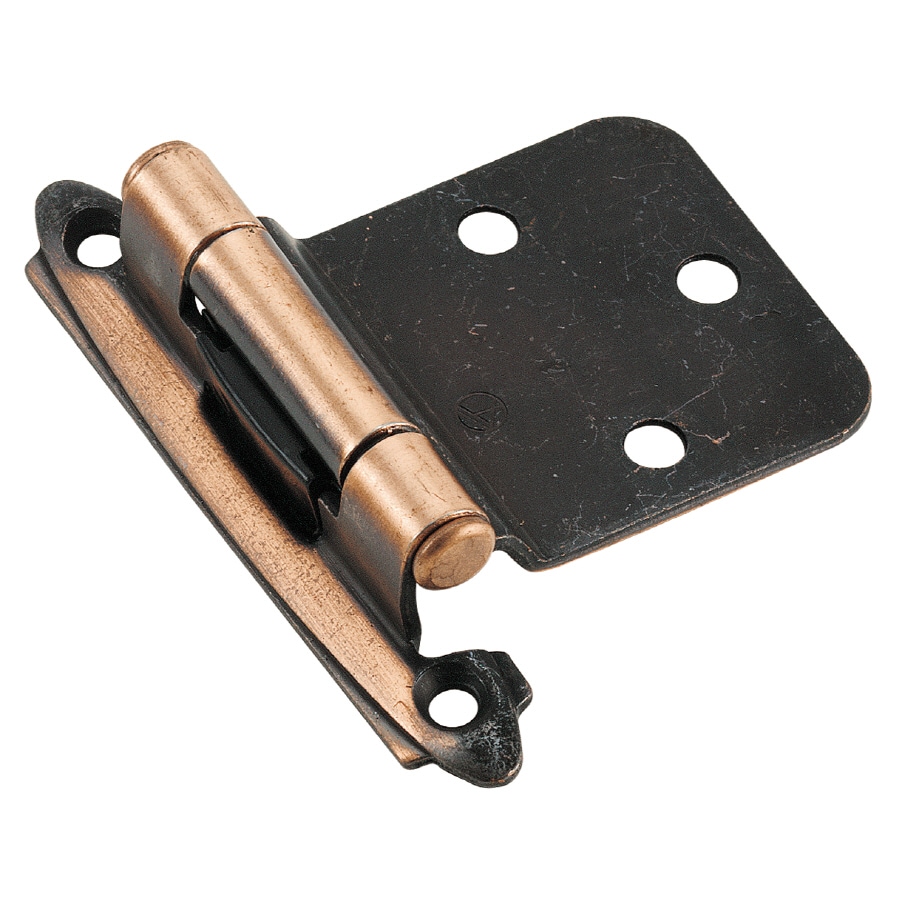Types of Cabinet Door Hinges Available at Lowe’s: Cabinet Door Hinges Lowes

Lowe’s offers a wide selection of cabinet door hinges, catering to various styles, budgets, and needs. These hinges play a crucial role in ensuring smooth and reliable door operation, contributing to the overall functionality and aesthetics of your kitchen or bathroom cabinets.
Types of Cabinet Door Hinges
The types of cabinet door hinges available at Lowe’s can be broadly categorized into two main types:
- Traditional Hinges: These are the classic, time-tested hinges with a simple design. They are often used for standard cabinet doors and are known for their affordability and durability.
- European Hinges: These hinges are known for their sleek, modern design and precise functionality. They offer a wider range of adjustments and are commonly used in contemporary and custom cabinets.
Within these categories, Lowe’s offers a variety of hinge types, each with its own unique features and applications. Here is a detailed breakdown:
| Hinge Type | Features | Benefits | Drawbacks | Applications |
|---|---|---|---|---|
| Full Overlay Hinges | – Mounted on the cabinet door and frame – Concealed from view when the door is closed – Offer a sleek and modern aesthetic |
– Provide a clean and minimalist look – Easy to clean and maintain – Offer a wide range of adjustments |
– Can be more expensive than other types of hinges – May require specialized tools for installation |
– Suitable for modern and contemporary cabinet styles – Ideal for doors that need to be fully concealed |
| Semi-Overlay Hinges | – Mounted on the cabinet door and frame – Partially concealed when the door is closed – Offer a more traditional look |
– Provide a classic and timeless aesthetic – Offer a wider range of adjustments than traditional hinges – Can be used with both wood and metal doors |
– May not be as easy to clean as full overlay hinges – Can be more expensive than traditional hinges |
– Suitable for traditional and farmhouse cabinet styles – Ideal for doors that need to be partially concealed |
| Inset Hinges | – Mounted on the cabinet door and frame – Completely concealed when the door is closed – Offer a clean and minimalist look |
– Provide a seamless and integrated appearance – Offer a wide range of adjustments – Can be used with both wood and metal doors |
– Can be more expensive than other types of hinges – May require specialized tools for installation |
– Suitable for modern and contemporary cabinet styles – Ideal for doors that need to be fully concealed |
| Soft-Close Hinges | – Incorporate a dampening mechanism – Slows the door down as it closes – Prevents slamming and noise |
– Provide a quiet and smooth closing experience – Reduce wear and tear on the hinges and doors – Enhance the overall functionality of the cabinets |
– Can be more expensive than standard hinges – May require specialized tools for installation |
– Suitable for all cabinet styles – Ideal for high-traffic areas and homes with children |
| Concealed Hinges | – Mounted on the cabinet door and frame – Completely concealed from view – Offer a sleek and modern aesthetic |
– Provide a clean and minimalist look – Offer a wide range of adjustments – Can be used with both wood and metal doors |
– Can be more expensive than other types of hinges – May require specialized tools for installation |
– Suitable for modern and contemporary cabinet styles – Ideal for doors that need to be fully concealed |
Choosing the Right Hinge for Your Needs

Selecting the right cabinet door hinges is crucial for functionality and aesthetics. A well-chosen hinge ensures smooth operation, lasting durability, and a polished look for your cabinets. This guide helps you navigate the hinge selection process, ensuring you choose the perfect hinge for your needs.
Factors to Consider When Selecting Cabinet Door Hinges, Cabinet door hinges lowes
The right hinge depends on several factors, including door weight, cabinet style, desired aesthetic, and budget. Consider these factors before making your selection.
- Door Weight: Heavier doors require stronger hinges to support their weight and prevent sagging. Hinges with more robust construction, like full-overlay hinges with a higher weight capacity, are ideal for heavier doors.
- Cabinet Style: The cabinet style dictates the hinge type and installation method. For example, overlay cabinets (where the door covers the cabinet frame) typically use full-overlay hinges, while inset cabinets (where the door sits flush with the frame) require inset hinges.
- Desired Aesthetic: The hinge finish and design should complement the overall cabinet style. Choose hinges that match the hardware and create a cohesive look. Hinges come in various finishes, including brushed nickel, oil-rubbed bronze, and polished chrome.
- Budget: Hinges come in a range of price points. Consider your budget and prioritize features that are essential to you. Basic hinges offer functionality, while premium hinges provide added features like self-closing mechanisms and adjustable tension.
Measuring Existing Hinges or Cabinet Doors
Accurate measurements are crucial for ensuring compatibility with new hinges.
- Existing Hinges: If you’re replacing hinges, measure the existing hinge’s screw hole spacing, hinge width, and hinge cup depth. These measurements help ensure the new hinges fit properly.
- Cabinet Door: If you’re installing new hinges, measure the door’s thickness and the distance from the edge of the door to the center of the hinge cup. These measurements help determine the appropriate hinge size and installation location.
Choosing the Right Hinge Based on Your Needs
This decision tree helps you navigate the hinge selection process:
- What is the cabinet style?
- Overlay: Proceed to “What is the door weight?”
- Inset: Proceed to “What is the desired aesthetic?”
- What is the door weight?
- Light: Consider basic hinges.
- Heavy: Consider full-overlay hinges with a higher weight capacity.
- What is the desired aesthetic?
- Contemporary: Consider minimalist hinges with a modern finish.
- Traditional: Consider ornate hinges with a classic finish.
- What is your budget?
- Limited: Consider basic hinges with essential features.
- Flexible: Consider premium hinges with added features like self-closing mechanisms and adjustable tension.
Installation Guide for Cabinet Door Hinges

Installing cabinet door hinges is a common DIY project that can enhance the look and functionality of your kitchen or bathroom cabinets. While it may seem daunting at first, with the right tools and guidance, you can successfully install hinges without professional help.
Tools Needed for Installing Cabinet Door Hinges
The following tools are essential for installing cabinet door hinges:
- Screwdriver: A Phillips head screwdriver is the most common type used for installing hinges. You’ll need a size that matches the screw heads on your hinges.
- Drill: A drill with a variety of drill bits is useful for pre-drilling holes for the screws, especially in hard woods.
- Measuring Tape: A measuring tape is crucial for accurately marking the hinge locations on the cabinet door and cabinet frame.
- Level: A level ensures that the hinges are installed straight, preventing the door from sagging or misalignment.
- Pencil: A pencil is used to mark the hinge locations on the cabinet door and cabinet frame.
- Safety Glasses: Protect your eyes from flying debris during the installation process.
- Work Gloves: Gloves protect your hands from splinters and provide a better grip.
Safety Precautions When Installing Cabinet Door Hinges
Safety should always be prioritized when working with tools. Here are some precautions to take:
- Wear safety glasses: Flying debris from drilling or hammering can cause eye injuries. Protect your eyes by wearing safety glasses throughout the installation process.
- Use a stable work surface: Ensure the cabinet is securely positioned on a stable surface to prevent it from moving or tipping over during installation.
- Avoid using excessive force: Overtightening screws can damage the hinge or cabinet. Use moderate force when tightening screws.
- Keep tools sharp and in good condition: Dull or damaged tools can lead to accidents. Ensure all tools are sharp and in good working order before using them.
Step-by-Step Guide for Installing Cabinet Door Hinges
Installing cabinet door hinges is a straightforward process that involves a few key steps.
| Step Number | Description | Tools | Tips |
|---|---|---|---|
| 1 | Determine the Hinge Placement: The hinge placement will depend on the size of the cabinet door and the type of hinges you’re using. Generally, you’ll want to place the hinges about 3-4 inches from the top and bottom of the door. |
Measuring tape, pencil, level | Use a level to ensure the hinges are installed straight. Measure the distance between the hinges and mark the placement on both the cabinet door and cabinet frame. |
| 2 | Pre-Drill Holes: Pre-drilling holes for the screws will help prevent the wood from splitting and make installation easier. Use a drill bit slightly smaller than the diameter of the screws. |
Drill, drill bits | Pre-drill holes slightly deeper than the length of the screws. |
| 3 | Attach the Hinge Plates: Align the hinge plates with the marked locations on the cabinet door and cabinet frame. Use the screws provided with the hinges to attach the plates. |
Screwdriver | Tighten the screws securely but avoid overtightening. |
| 4 | Install the Door: Align the door with the cabinet frame, ensuring the hinges are properly aligned. Use a screwdriver to secure the door to the hinges. |
Screwdriver | Check the door alignment before securing the screws. |
| 5 | Adjust the Door: Once the door is installed, you may need to adjust the hinges to ensure the door opens and closes smoothly. Use the adjustment screws on the hinges to fine-tune the door alignment. |
Screwdriver | Adjust the hinges until the door is level and opens and closes without any resistance. |
Troubleshooting Tips for Installing Cabinet Door Hinges
Here are some troubleshooting tips to address common issues that may arise during installation:
- Door Sagging: If the door sags, it may be due to loose screws or improperly installed hinges. Tighten the screws or re-install the hinges. If the sagging persists, you may need to replace the hinges with a stronger type.
- Door Misalignment: If the door is misaligned, adjust the hinges using the adjustment screws. If the misalignment is severe, you may need to re-install the hinges.
- Door Not Closing Properly: If the door doesn’t close properly, it may be due to a misaligned hinge or a problem with the door latch. Check the hinge alignment and adjust it if necessary. If the latch is faulty, you may need to replace it.
Cabinet door hinges lowes – Finding the right cabinet door hinges at Lowe’s can be a bit of a chore, especially if you’re going for a specific look. For example, if you’re aiming for that classic, warm feel, consider red oak cabinets with wood flooring – they pair beautifully with hinges that have a brushed nickel finish.
These hinges not only complement the wood tones but also add a touch of sophistication to your kitchen or bathroom.
Cabinet door hinges from Lowe’s can add a touch of elegance to any space, especially when paired with a beautiful wooden cabinet for bedroom. The right hinges can create a smooth, quiet opening and closing motion, enhancing the overall aesthetic of your chosen cabinet.
Whether you’re looking for a modern or traditional style, Lowe’s offers a variety of cabinet door hinges to suit your needs and complement your wooden cabinet perfectly.
